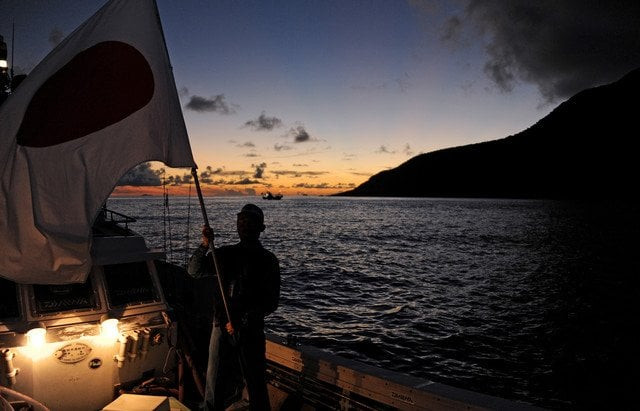China defence ministry denies Japan radar incident
The incident marked the first time the two nations' navies have locked horns in a territorial dispute.

A file photo of a Japanese vessel. PHOTO: AFP
The incident, which Japan said happened last week, marked the first time the two nations' navies have locked horns in a territorial dispute that has some commentators warning about a possible armed conflict.
The neighbours - also the world's second- and third-largest economies - have seen ties sour over uninhabited Japanese-controlled islands in the East China Sea known as Senkaku in Tokyo and Diaoyu by Beijing, which claims them.
On both January 19 and January 30, China's defence ministry said in a statement faxed to AFP, the Chinese ship-board radar maintained normal operations and "fire-control radar was not used".
"The Japanese side's remarks were against the facts," it said.
"Japan unilaterally made public untrue information to the media and senior Japanese government officials made irresponsible remarks that hyped up the so-called 'China threat'," it added.
Tokyo had "recklessly created tension and misled international public opinion", it said.
On Thursday Japanese Defence Minister Itsunori Onodera told parliament that the Chinese radar lock amounted to a "threat of force", but also called for some mechanism to allow defence authorities to communicate with each other.
The long-running row over the islands intensified in September when Tokyo nationalised part of the chain, triggering fury in Beijing and huge anti-Japan demonstrations across China.
Beijing has repeatedly sent ships and aircraft near the islands and both sides have scrambled fighter jets, though there have been no clashes.
Japan's Prime Minister Shinzo Abe called the radar incident "extremely regrettable," "dangerous" and "provocative" but also said that dialogue must remain an option.
"We will not close the window of dialogue. This is most important," said Abe. "I would like China to return to a more open attitude towards our strategic partnership."
The island chain, which is also claimed by Taiwan, is believed to sit atop vast mineral reserves.



















COMMENTS
Comments are moderated and generally will be posted if they are on-topic and not abusive.
For more information, please see our Comments FAQ